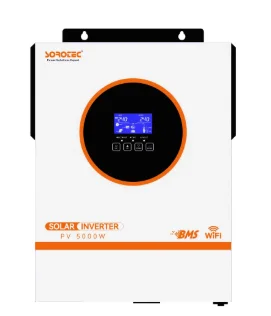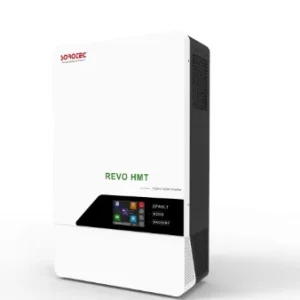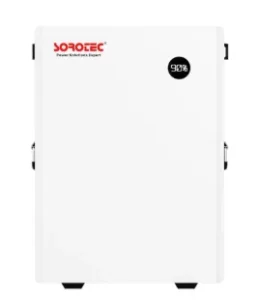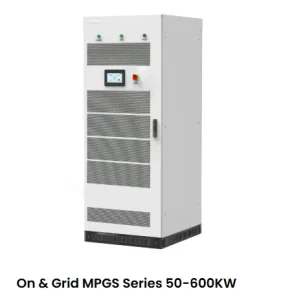The phrase solar power plant can sound big and a little vague. In fact, these plants come in many shapes. A small rooftop PV array on a family house and a huge open-field farm in India are both solar plants, yet they serve very different needs. For companies thinking about solar, or for households just curious, knowing the common plant setups—and where inverters from SOROTEC fit in—makes the subject much easier to understand.

What Are the Main Types of Solar Power Plants
Photovoltaic Solar Power Plants
The most popular design is the photovoltaic (PV) plant. These systems use panels to catch sunlight and turn it into electricity. They can be tiny, like a rooftop on a grocery shop, or massive, like a floating project on a lake in Vietnam.
Concentrated Solar Power Plants
Another type is concentrated solar power (CSP). These don’t make electricity straight from the panels. Instead, they use mirrors to focus sunlight into heat. The heat then drives a turbine. CSP is often built in desert areas with very strong sun. Spain’s Gemasolar tower is a well-known example.
Hybrid Solar Power Plants
Hybrid plants mix solar with other sources. That could be a diesel generator, a battery bank, or even wind turbines. The point is balance. For instance, on a remote island where the grid is weak, a hybrid plant keeps lights on even when the clouds roll in.
How Do Photovoltaic Solar Power Plants Work
Conversion of Sunlight into Electricity
A PV system begins with panels. The panels take in sunlight and make direct current (DC). But DC cannot run a TV or a machine in a workshop. It needs to be changed into alternating current (AC).
Role of Solar Inverters in Power Management
That’s the job of the inverter. Think of it as the “translator” of the system. Inverters from SOROTEC, like the REVO HMT and REVO HM, not only turn DC into AC. They also manage loads, talk to batteries, and even connect to WiFi so users can check performance remotely.
Grid Connected and Off Grid Applications
PV plants can be tied to the grid or set up off-grid. On-grid is more common in cities because people can draw steady electricity when the sun is down. Off-grid is often chosen in rural areas or by businesses that want more control and independence.
Why Are On Grid Solar Plants So Widely Used
Stable Power Supply with Grid Connection
For many rooftops in towns, on-grid systems are simple and steady. The grid fills in when solar is not enough, so power is almost never interrupted.
Cost Savings through Net Metering
In some countries, users can sell unused solar electricity back to the grid. A bakery in Italy with a 50 kW system can cut its bill nearly in half in summer. That is real money saved.
Easy Integration with Existing Infrastructure
No need for big fuel tanks or extra logistics. Just panels, inverters, and the existing wires. The SOROTEC REVO HMT makes it easier because it supports both single and three-phase outputs. That is important for factories that run large motors.
When Are Off Grid Solar Plants the Best Choice
Energy Access in Remote Locations
In many rural places, grid coverage is weak or missing. Think of farms in western China or mining camps in Africa. Off-grid is the only option there.
Independence from National Grid
The REVO VM II PRO inverter can even start without batteries. That helps projects where budgets are tight but electricity is still needed for tools and lighting.
Backup Power for Critical Loads
Even in big cities, off-grid setups are useful. Hospitals, telecom towers, and data centers use them as backup. If the grid goes down, solar plus storage can keep the systems alive until power comes back.
What Is the Difference Between REVO HMT and REVO HM Systems
REVO HMT Higher Input Current and Three Phase Output
The REVO HMT 4/6/8/11 kW supports higher PV input currents, up to 40A for some models. It also allows parallel setups with three-phase output. This makes it perfect for industrial workshops.
REVO HM Compact Design with Parallel Operation
The REVO HM 4/6 kW has a smaller body but still supports parallel running. It suits small factories, shops, or offices where space is limited but reliable energy is required.

Flexible Options for Residential and Commercial Use
Together, REVO HMT and REVO HM cover a wide field. They work well for both residential roofs and larger commercial operations. The choice depends on roof area, equipment type, and whether three-phase power is needed.
How Does the REVO VM II PRO Enhance Off Grid Solutions
Wide Range of Power from 1.6KW to 10KW
The REVO VM II PRO covers a large span, from small home use at 1.6 kW to larger community systems at 10 kW.
Battery Free Operation and WiFi Monitoring
It can work without batteries, which lowers early costs. Owners can add storage later if they wish. With WiFi monitoring, the installer doesn’t need to travel far for every check or question.
Parallel Capability for Scalable Systems
Up to six units can work in parallel. That means a family can start with 3.2 kW and then expand as needs grow, without throwing away the original unit.
Why Should Businesses Consider Hybrid Solar Configurations
Combining On Grid Stability with Off Grid Security
Hybrid setups give both safety and comfort. Take a cold storage warehouse: it stays linked to the grid but still has solar plus storage ready in case of an outage.
Cutting Energy Costs with Peak and Valley Functions
SOROTEC inverters let businesses charge batteries at night when rates are cheaper. Then they use that stored energy during the day when costs are high. It is a simple method but can cut bills month after month.
Keeping Operations Running with Backup Power
For businesses, even a short stop can mean lost income. Hybrid systems give backup when the grid fails. Many companies see this peace of mind as worth the investment.
FAQs
Q1. What is the most common type of solar power plant today?
Photovoltaic (PV) plants are the most common worldwide. They make up more than 90% of new solar projects every year.
Q2. Can I use a SOROTEC inverter without batteries?
Yes. Models like the REVO VM II PRO and REVO HMT can run without batteries. This makes the setup cheaper at the start.
Q3. How long does it take for a solar power plant to pay back its cost?
It depends on country and local incentives. Many business projects see payback in 5 to 8 years. Homes may take a little longer.








